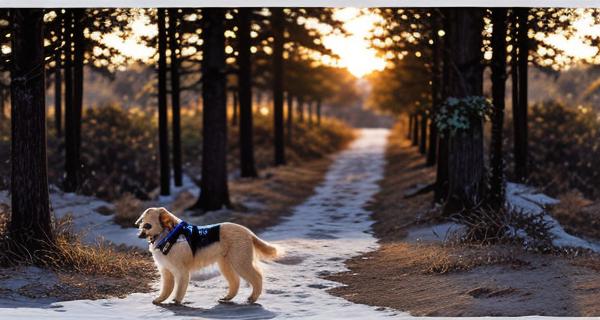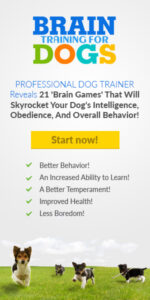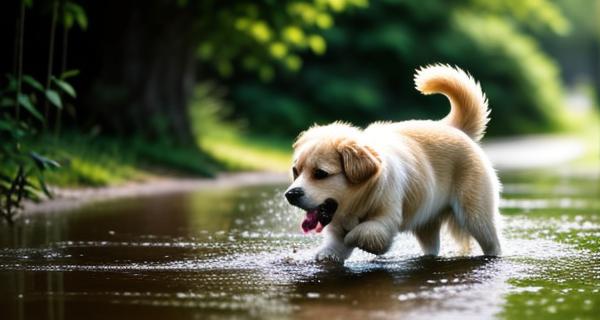Seasonal Dog Care: Keeping Your Dog Safe in Summer & Winter
Summer Dog Safety
## Summer Dog Safety
Summer is a fantastic time for outdoor adventures with your furry friend, but it’s crucial to prioritize their safety. The heat can be dangerous, and a few simple precautions can make all the difference.
**Preventing Heatstroke:** Dogs don’t sweat like humans, making them highly susceptible to overheating. Never leave your dog in a parked car, even for a few minutes – the temperature inside can rapidly climb to deadly levels. Provide plenty of fresh, cool water, and avoid strenuous exercise during the hottest part of the day.
**Paw Protection:** Hot pavement can burn your dog’s paws. Test the pavement with the back of your hand – if it’s too hot for you, it’s too hot for them. Consider using paw protection boots or sticking to grassy areas.
**Sun Protection:** Just like humans, dogs can get sunburned, especially those with light-colored fur. Apply dog-specific sunscreen to sensitive areas like the nose, ears, and belly.
**Hydration & Monitoring:** Encourage your dog to drink regularly. Watch for signs of heatstroke, such as excessive panting, drooling, weakness, and vomiting. If you suspect heatstroke, seek immediate veterinary care.
**Bug & Tick Prevention:** Summer brings out the pests! Protect your dog from fleas, ticks, and mosquitoes with preventative medication recommended by your vet. Regular tick checks are essential.
Enjoy the summer sunshine with your dog by their side, but always remember that their safety is the top priority. A little planning can ensure a happy and healthy summer for your beloved companion.
Winter Dog Safety
Winter Dog Safety: Keeping Your Pup Warm & Protected
Winter’s chill can pose serious risks to our furry friends. While we bundle up, dogs are particularly vulnerable to cold-related dangers. Here’s how to ensure your canine companion stays safe and comfortable throughout the colder months.
**Protecting Against the Cold:** Short-haired breeds, small dogs, and puppies are most susceptible to cold. Consider dog coats or sweaters, especially during walks. Pay attention to paw health! Ice and salt can cause painful injuries. Wipe paws after walks and use paw balm to prevent cracking and irritation.
**Beware of Ice & Salt:** Road salt and de-icing chemicals are toxic if ingested and can irritate paw pads. Avoid walking your dog on heavily salted surfaces whenever possible. If contact occurs, rinse paws thoroughly with water.
**Hypothermia & Frostbite:** Be aware of the signs of hypothermia – shivering, lethargy, and weakness. Frostbite manifests as pale or bluish skin, often on ears, paws, and tail. Seek immediate veterinary attention if you suspect either.
**Indoor Comfort is Key:** Ensure your dog has a warm, draft-free place to rest indoors. A cozy bed, blankets, and even a heated pad can make a big difference.
**Hydration Matters:** Even in winter, dogs need water! Ensure fresh, unfrozen water is always available.
**Watch for Hidden Hazards:** Be mindful of antifreeze, which is extremely toxic. Store it securely and clean up any spills immediately.
By taking these precautions, you can help your dog enjoy the winter season safely and happily. If you have any concerns about your dog’s health, consult your veterinarian.
Seasonal Dog Care
Seasonal Dog Care
Summer and winter bring unique challenges to our furry friends, demanding adjustments to their care routines. Keeping your dog safe and comfortable requires awareness of the specific risks each season presents.
Summer heat can be dangerous. Dogs are prone to overheating, even with shade and water. Avoid strenuous exercise during the hottest parts of the day, and always provide plenty of fresh, cool water. Never leave a dog unattended in a parked car – temperatures inside can rise rapidly, even on mild days. Consider paw protection from hot pavement and provide cooling mats or vests.
Winter’s cold poses its own set of concerns. Hypothermia is a serious risk, especially for short-haired breeds or puppies. Protect your dog with a warm coat, particularly during walks. Be mindful of ice and salt on sidewalks, which can irritate paws. Shorter walks and indoor playtime are ideal to prevent overexertion in the cold.
Beyond temperature, both seasons require attention to parasite prevention. Fleas and ticks are more active in warmer months, while heartworm remains a year-round threat. Regular preventative medication is crucial.
Dietary needs also change. Dogs may need more or less food depending on their activity levels and the weather. Consult with your vet to adjust their meals accordingly.
Finally, remember to monitor your dog’s behavior. Signs of discomfort, such as excessive panting, lethargy, or reluctance to go outside, warrant a visit to the veterinarian. Proactive care ensures your dog enjoys a happy and healthy year-round.
Dog Care Tips
Seasonal Dog Care: Keeping Your Dog Safe in Summer & Winter
Summer heat and winter chill can pose serious risks to our furry friends. Proactive care is key to ensuring your dog stays happy and healthy year-round.
**Summer Safety:** Heatstroke is a major concern during summer. Never leave your dog unattended in a parked car, even for a few minutes – the temperature inside can skyrocket. Provide plenty of fresh, cool water and shade. Avoid strenuous exercise during the hottest part of the day, opting for early morning or evening walks. Consider paw protection with booties to prevent burns on hot pavement. Be mindful of potential hazards like poisonous plants and insects.
**Winter Wellness:** Cold weather presents its own challenges. Protect your dog from frostbite with a warm coat, especially for short-haired breeds. Salt and ice can irritate paw pads; wipe their paws after walks. Be aware of antifreeze, which is highly toxic. Shorter walks may be necessary to avoid exposure to extreme cold. Ensure your dog has access to a warm, dry place to rest.
**Year-Round Essentials:** Regular vet checkups are crucial for maintaining your dog’s health. Don’t forget about flea, tick, and heartworm prevention – these parasites are active year-round. Pay attention to your dog’s behavior; changes in appetite, energy levels, or activity could indicate a health issue. A little extra attention and preparation can make a big difference in your dog’s well-being, no matter the season.





Post Comment
You must be logged in to post a comment.